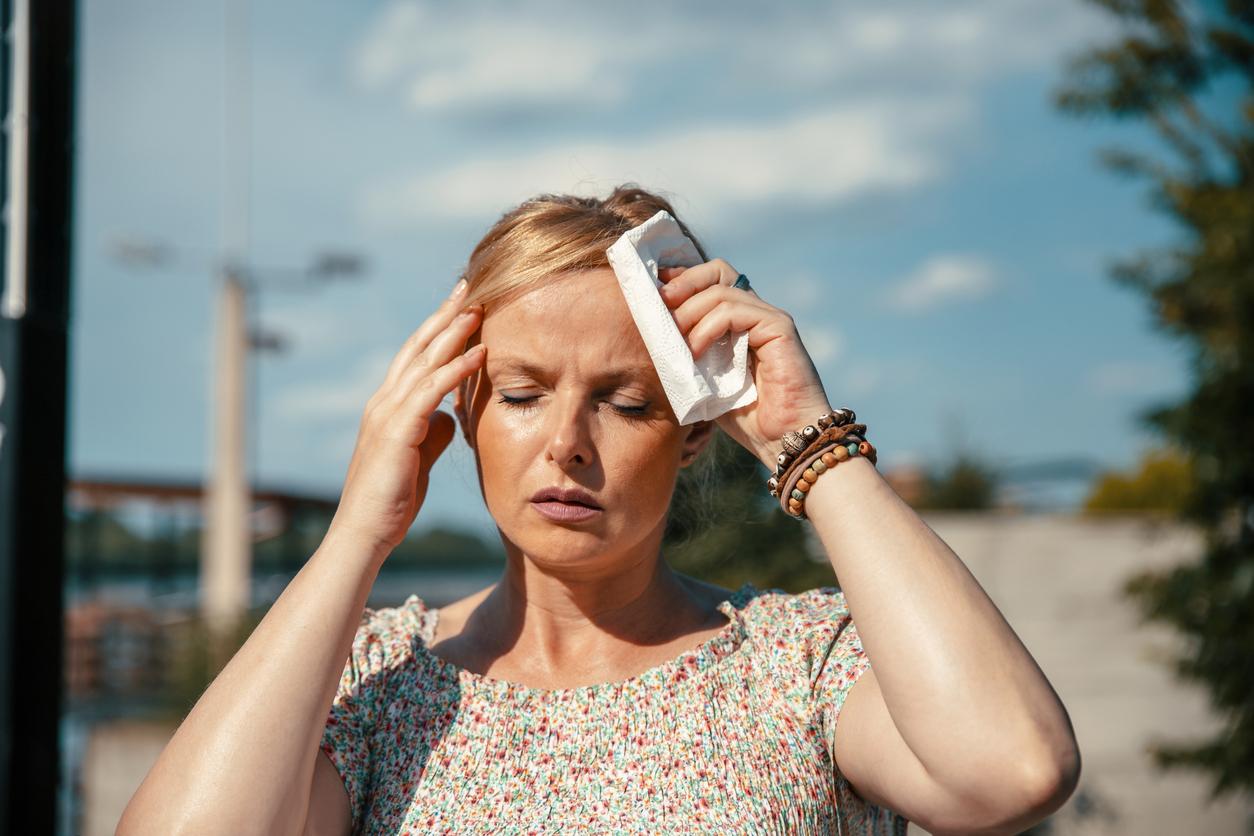Arianna Kent and Tommy Leith both suffer from cold urticaria: each winter, the drop in temperatures causes them to develop red patches accompanied by itching and difficulty in breathing. If they are not treated in time, they can die.

“It’s so strange and rare that often people think it’s a joke”. And yet… Arianna Kent, a 22-year-old Canadian, and Tommy Leitch, a 7-year-old Briton, both suffer from cold urticaria, improperly nicknamed winter allergy. Every year, the drop in temperatures leads to red patches, itching and breathing difficulties. This rare reaction affects one in 2,000 people worldwide and can lead to death in anaphylactic shock. Why Doctor tells you more.
It was at 14 that Arianna Kent developed the first symptoms of cold urticaria. She lives in Edmonton, in the state of Alberta, in western Canada, where the temperature can drop to -40°C in winter. As she sweeps the snow in front of her house, the young girl has a fit. Faced with doctors convinced that she suffers from food allergies, it takes two years to identify the real origin of her illness. “It’s so weird and rare that often people think it’s a joke. It’s not every day that someone tells you ‘I’m allergic to the cold’, but it’s difficult, especially when people don’t believe you”, confides the young girl in a video broadcast by Caters News Agency.
“The cold causes burns and itching on the skin. For my throat, it’s like asthma. We inhale harder and it’s hard to breathe. It’s like something is pressing down on your chest, making it feel tighter and heavier, she describes. I risk anaphylactic shock. In this case, I should use an EpiPen (emergency treatment of serious allergic reactions)”, she explains.
Avoid ice cream, cold drinks and swimming pools
But winter is not the only risk factor for the girl. All he has to do is eat ice cream, dive into a cool pool or spend time in an air-conditioned room to be in danger. Because of this, Ariana even had to leave the restaurant business, in which she worked. “When I was near a draught, or sent to fetch food from the fridge, I had hives”, says the one who now tries to stay warm as much as possible.
Tommy Leitch was five years old when the first symptoms appeared. Noting a rash on her head, her mother, Abigail, first thinks of a viral infection. “But the next morning he was covered from head to toe with it, complaining of pain in his stomach and chest. Her face and her stomach were swollen”, she testified to the Sun.
In the emergency room, a dermatologist diagnoses Tommy as suffering from cold urticaria. Later, his family realizes that the boy is also sensitive to too hot temperatures. “I would never have imagined that one could be allergic to temperatures before this,” exclaims Abigail.
“A terrible disease”
The child must therefore always remain at room temperature. If exposed to more or less than 20 degrees, his skin begins to break out. Also, summer or winter, he never spends more than 20 minutes outdoors. “Tommy starts getting worried as soon as he sees the rash, which I think makes it worse,” his mother says. But the child is now able to recognize the early stages of a hives outbreak and immediately asks Abigail for an antihistamine. However, sometimes this is not enough. The child begins to vomit and must be taken to the hospital in emergencies.
“Last winter it was hospitalized every month. His allergic reaction caused him to vomit violently, delirious and struggle to breathe. It’s a horrible disease, and I often panic about it because it can threaten Tommy’s life if he doesn’t get urgent medical treatment,” said the Briton. “He’s missed a lot of play dates with his friends and as a family we haven’t been able to go on vacations or excursions because I’m too scared it will happen when we’re on the plane or on the road. ‘foreigner.”
Although no official statistics have been produced on cold allergy, this rare pathology affects one in 2,000 people worldwide. According to the WHO, “cold urticaria is characterized by edema which appear quickly in reaction to the cold. For affected subjects, diving into cold water carries the risk of shock, loss of consciousness and even death.”
In detail, the swollen red patches that appear a few minutes after contact with cold, are accompanied by severe itching. “They can disappear in a few minutes or a few hours”, explains Dr. Elisabeth Berrissoul, dermatologist and co-founder of the Epiderm website at Health Magazine. Also, the severity of cold urticaria and the conditions under which it occurs vary greatly from person to person.
The ice cube test does exist
To confirm the diagnosis of cold urticaria, the doctor does a test with an ice cube. After placing an ice cube on the skin, he observes after how long the urticarial papules appear. Although urticaria is most often idiopathic, the specialist will look for a possible cause (taking certain medications, infectious context, autoimmune diseases, cryopathies, etc.) by asking the patient questions about his lifestyle and his family and medical history followed by a clinical examination and a blood test.
As long-term treatment, patients are prescribed a second-generation antihistamine orally for several months or even several years. For severe forms of shock, as in the cases of Adrianna Kent and Tommy Leitch, the doctor prescribes self-injectable adrenaline, which the patient must always keep on hand.
In all cases, affected people should avoid taking cold baths, consuming frozen drinks or foods and limiting travel as much as possible when temperatures are low. If an outing is unavoidable, then it will be necessary to cover yourself with several layers of clothing. Finally, in the event of surgery, it is essential to warn the surgeon beforehand because the operating theaters are generally cold.
.















